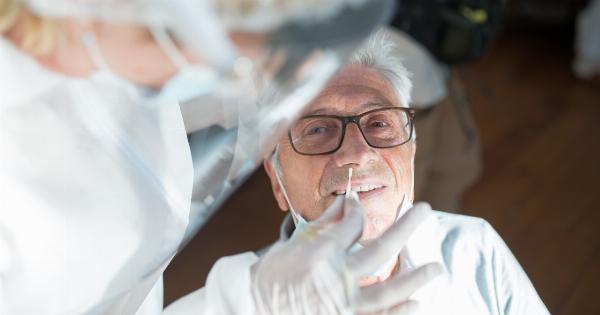Have you ever noticed a change in the color of your urine and wondered what it could mean? Believe it or not, the color of your urine can be an important indicator of your overall health, and one of the key factors that can influence its color is your diet. In this article, we will explore the connection between diet and urine color, and learn how different urine colors can reveal valuable information about your well-being.
Understanding Urine Color
Before we dive into the relationship between diet and urine color, let’s first understand what different urine colors can indicate. Generally, urine should be a pale yellow or straw-colored.
The intensity of the color is primarily due to a compound called urochrome, which is a waste product resulting from the breakdown of hemoglobin.
When your body is properly hydrated, your urine tends to have a lighter color. On the other hand, if you are dehydrated, your urine may become darker, indicating a higher concentration of waste products.
However, there are many other factors that can contribute to changes in urine color, and your diet plays a significant role in this process.
The Impact of Diet on Urine Color
Your diet can cause various substances to be excreted through your urine, which in turn affects its color. Here are some common dietary factors that impact urine color:.
1. Hydration Levels
As mentioned earlier, the color of your urine is closely related to your hydration levels. If you are well-hydrated, your urine will be more diluted, resulting in a lighter color.
Conversely, if you are dehydrated, your urine will be more concentrated and appear darker. Staying hydrated by drinking an adequate amount of water is essential for maintaining a healthy urine color.
2. Foods and Beverages
Certain foods and beverages contain pigments that can affect the color of your urine. For example:.
a) Beets:
Eating beets can turn your urine pink or reddish. This is known as “beeturia” and is harmless. However, if you notice blood-like discoloration and you haven’t consumed beets, it’s advisable to consult a healthcare professional.
b) B-vitamins:
B-vitamins, particularly vitamin B2 (riboflavin), can give your urine a bright yellow color. This is normal, as excess B-vitamins are excreted through the urine.
c) Asparagus:
After consuming asparagus, some people experience a distinct odor in their urine. This is due to certain compounds in asparagus that are broken down and excreted through urine, but the odor is not related to the color of the urine.
3. Medications and Supplements
Certain medications and supplements can alter the color of your urine. For example, some antibiotics may cause your urine to appear darker, while laxatives or certain pain relievers can give it a greenish tint.
It’s important to read the warnings and side effects of any medications or supplements you are taking, as they may mention possible changes in urine color.
Decoding Urine Colors and Their Meanings
Now that you understand how diet can affect urine color, let’s examine what different colors of urine might indicate:.
1. Clear or Pale Yellow:
If your urine is clear or pale yellow, it generally indicates that you are well-hydrated and have a healthy diet.
2. Dark Yellow or Amber:
This color suggests mild dehydration. Make sure to drink more water to maintain proper hydration.
3. Orange:
Drinking excessive amounts of certain beverages, such as orange soda or eating foods high in beta-carotene (like carrots), can cause your urine to appear orange.
However, orange urine can also be a sign of liver or bile duct issues, so it’s best to consult a healthcare professional if the color persists.
4. Pink or Red:
If your urine appears pink, reddish, or bloody, it may be a result of consuming beets or certain medications. However, visible blood in urine (hematuria) may also indicate a urinary tract infection, kidney stones, or other underlying health conditions.
If you’re unsure about the cause, seek medical advice promptly.
5. Green or Blue:
In rare cases, green or blue urine can be caused by certain medications, dyes used in medical tests, or a rare genetic condition. If your urine turns green or blue without any apparent reason, it is recommended to consult a healthcare professional.
6. Brown or Dark Brown:
Brown-colored urine can indicate liver or kidney problems. Additionally, consuming large quantities of fava beans, rhubarb, or aloe can also lead to a darker color.
If your urine continues to be dark brown and you haven’t consumed any of these foods, it’s crucial to seek medical attention as it may be a sign of a serious health issue.
When to Seek Medical Help
While diet can affect urine color, it’s important to remember that changes in urine color can potentially signal underlying health conditions. Here are some situations where seeking medical attention is recommended:.
– Persistent dark brown or bloody urine.
– Experiencing pain or discomfort while urinating.
– Frequent urge to urinate, accompanied by a burning sensation.
– Cloudy or foul-smelling urine.
– Prolonged changes in urine color without any dietary or medication influences.
If you’re concerned about any changes in urine color or have any worrisome symptoms, consulting a healthcare professional is always a wise decision. They will be able to provide a proper diagnosis and recommend any necessary tests or treatments.
Maintaining Healthy Urine Color
To promote a healthy urine color, consider the following tips:.
– Stay well-hydrated by drinking an adequate amount of water throughout the day.
– Follow a balanced diet rich in fruits, vegetables, lean proteins, and whole grains.
– Limit the consumption of processed foods, sugary beverages, and alcohol.
– If taking any medications or supplements, be aware of their potential side effects on urine color.
– Be mindful of your urine color and seek medical advice if any concerning changes persist.
Remember, urine color may vary due to different factors, including diet, medications, hydration levels, and underlying health conditions.
Listening to your body and being aware of any unusual changes can help you maintain good urinary health and overall well-being.


























